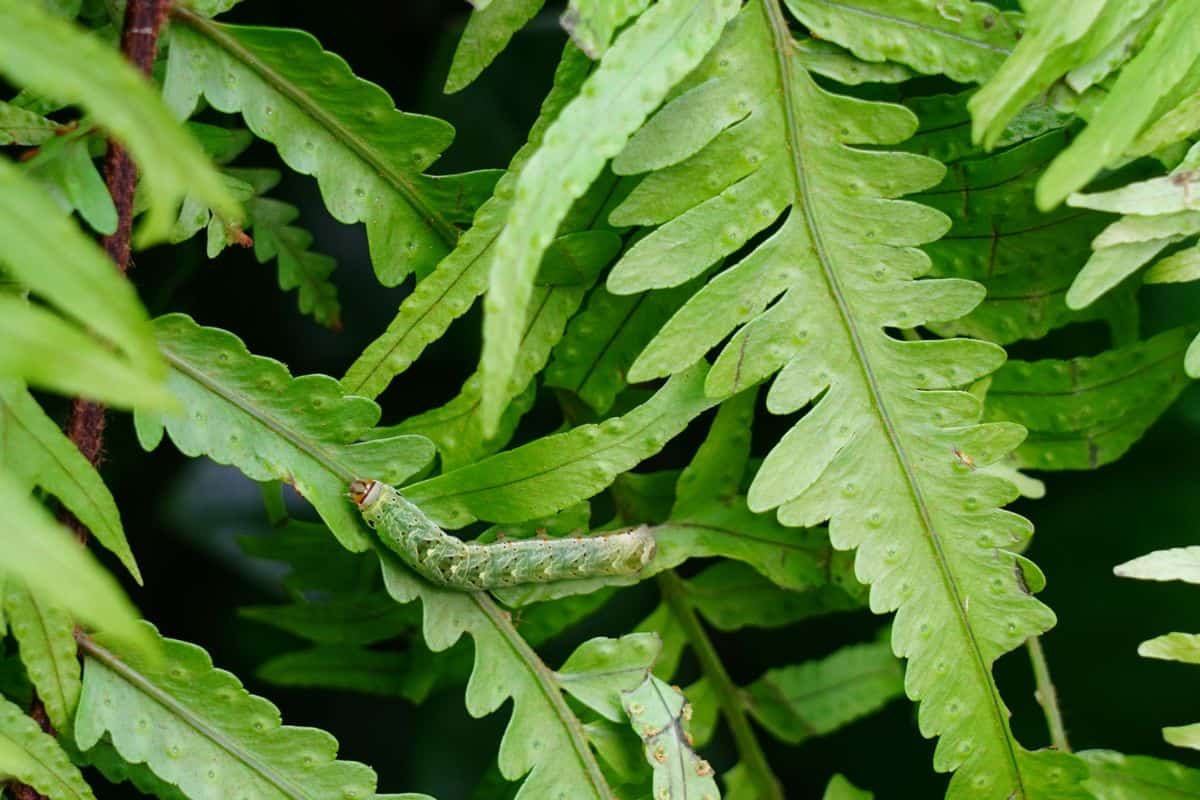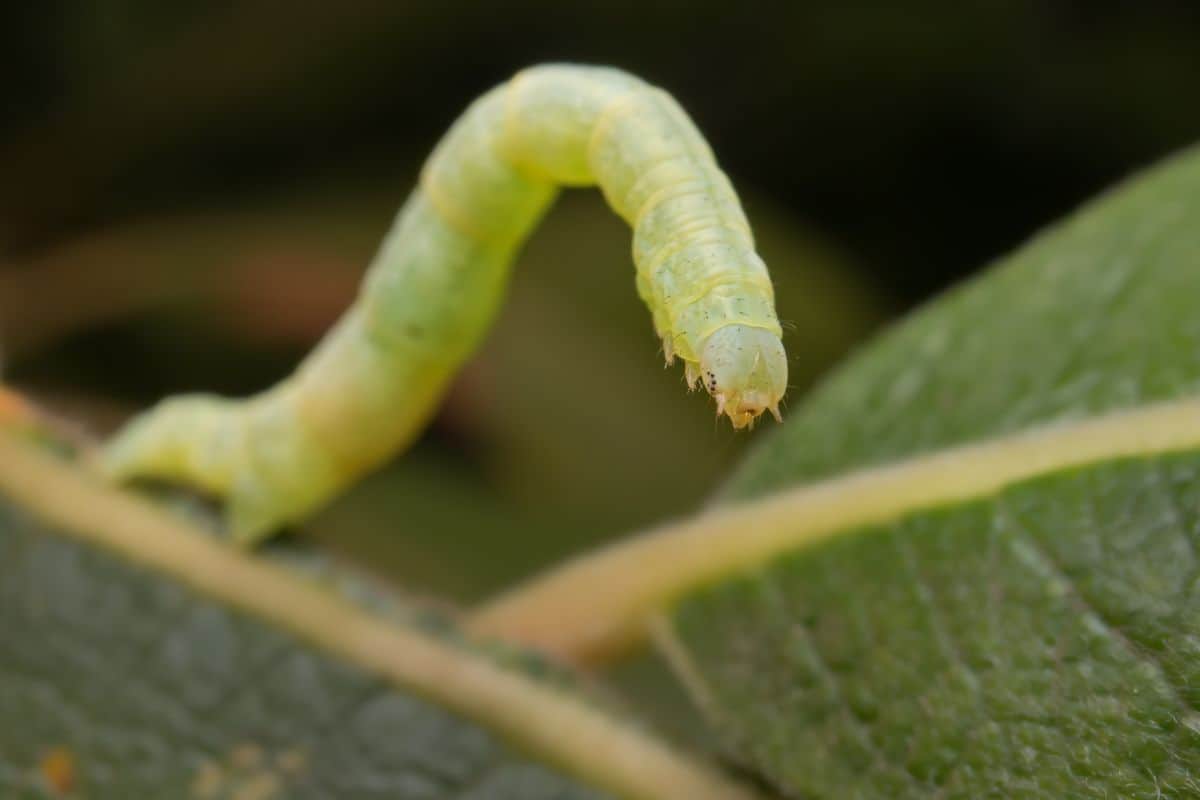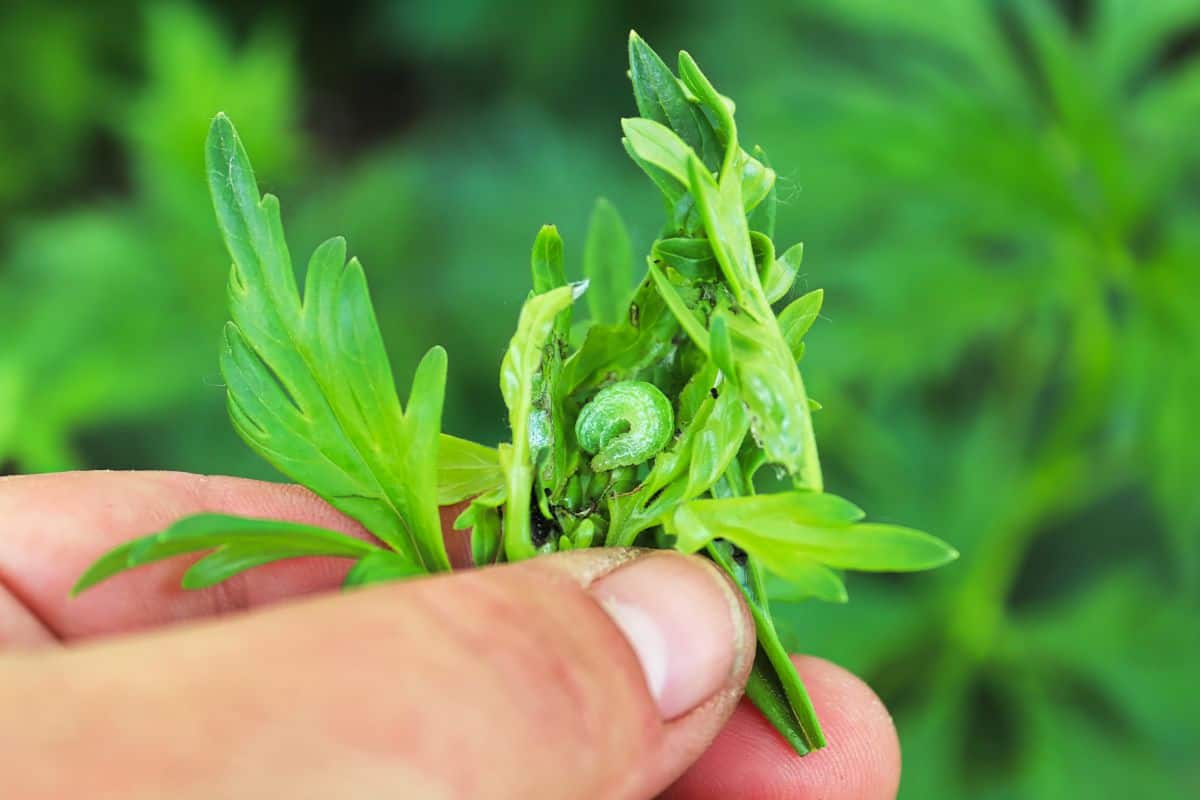Finding new critters in your yard can be exciting. However, touching or even interacting with unknown bugs is not always safe. Do you think a winter moth or caterpillar is crawling around your garden but aren't sure if they're okay to touch? Are these bugs poisonous?
We will answer these questions and many others below in this article!
No, a winter moth/caterpillar is not considered poisonous or dangerous. Considering this species has no mammalian toxicity, touching or interacting with one won't cause you any harm or adverse side effects.
However, these winter moths and caterpillars can display invasive behaviors, so although they aren't bad for you, they can be bad for your landscaping.
As we start this post, we will cover all things winter moths/caterpillars and discuss whether they're poisonous or not. If you think you have a few in your garden, want to learn more about this unique critter, or need ideas on getting rid of them, we're here to help. Let's dive right in!
![farmer removes caterpillar of insect pests (Cydalima perspectalis or the box three month) from leaves in garden.- Are Winter Moths Or Caterpillars Poisonous? [Can You Touch One?]](https://gardentabs.com/wp-content/uploads/2022/09/farmer-removes-caterpillar-of-insect-pests-Cydalima-perspectalis-or-the-box-three-month-from-leaves-in-garden.-Are-Winter-Moths-Or-Ca.png)
Are Winter Moths And Caterpillars Poisonous?
No. Winter moths and caterpillars won't be poisonous or harmful to humans or pets. Since this species has no toxicity, you can expect it to interact peacefully with you and anyone else in your garden.
Although winter moths and caterpillars can look intimidating, they aren't dangerous to touch or examine. Therefore, if you want to check one out, you are fine to do so.

Even though many fuzzy caterpillars tend to be poisonous, the winter species doesn't fall into this genre. However, your plants may not be as excited as you are about these critters nearby.
As we said, winter moths/caterpillars tend to be invasive throughout North American landscapes, often targeting ornamental trees and shrubs in early spring.
Therefore, you may need to take action against them if you notice bite marks and other damage.
Can I Touch A Winter Moth Or Caterpillar?

Yes! You can certainly touch a winter moth or caterpillar. However, you might not want to go too wild, as these critters are a bit awkward.
Considering this species is a bit bigger, you might be intimidated holding one. Again, you don't need to worry about toxicity with a winter moth or caterpillar, so that's good.
According to the Brooklyn Botanic Garden, most caterpillars are perfectly safe to interact with. In some cases, caterpillars can be toxic to consume, but this shouldn't be an issue as people don't typically consume this type of bug.
With that said, certain caterpillar and moth species are toxic to touch, so unless you're 100% sure of the species you're handling, try and keep a safe distance. It's better to be safe than sorry.
How Do I Know A Caterpillar Is Poisonous?
In general, caterpillars with bright colors, spines, or hair will be poisonous. You might also notice spikes along the back of a venomous caterpillar, which is pretty easy to distinguish.
If you see a caterpillar that is different than the one you imagine, it's also likely poisonous to the touch.
If you ignore these red flags, you could have a severe allergic reaction on your hands/body, so the prettier the critter, the farther you should stay away.
As we mentioned, the winter caterpillar won't be poisonous and doesn't have any striking characteristics (besides being big and green), so that's an easy indication.
According to USA Today, if you see a caterpillar you suspect is poisonous, you can remove it using shears to clip the leaf it is on. Once you remove the leaf, place it far from your home and garden.
We recommend wearing gloves, just in case the caterpillar tries crawling up your arm.
What Happens If I Touch A Poisonous Caterpillar?
If you suspect the caterpillar you touched is poisonous, there are a few symptoms to watch for. Generally, a venomous caterpillar will leave your skin feeling red and itchy.
Think of this like an allergic reaction. Specifically, poisonous caterpillars will lead to skin redness, itching, swelling, welts, and blisters. According to Poison Control, more severe reactions include:
- Shortness of breath
- Difficulty swallowing
- Headache and nausea
Again, for a more severe reaction to occur, you would need to touch your eyes or mouth after coming in contact with a venomous caterpillar, so make sure to wash your hands and arms immediately.
It's also worth mentioning that touching a poisonous caterpillar will begin to feel symptoms almost immediately. If these symptoms worsen or persist, we recommend contacting a medical professional as soon as possible.
Luckily, you can usually lessen these symptoms by using an ice pack, hydrocortisone cream, and oral antihistamine (like Benadryl), so don't panic quite yet.
How Do I Know A Moth Is Poisonous?
Luckily, virtually no moth species will pose a health risk to humans. Since moths are incapable of biting us, you won't see one become aggressive or try and attack you.
However, that's not to say one won't fly into your face or hair if you're close, which can be just as unsettling. An interesting fact about moths is that they become even less aggressive with age.
So, you're less likely to experience a moth coming near you if it's a bit older.
On the other hand, some moth species are poisonous if you consume them. Again, this shouldn't be an issue as moths aren't something we typically try and taste, but it's something to remember.
Is The Winter Moth/Caterpillar Invasive?
Yes. Unfortunately, both winter moths and caterpillars are invasive throughout North America. Besides loving ornamental fruit and flowering plants, winter moths and caterpillars can wreak havoc on your trees.
Specifically, winter moths/caterpillars invade deciduous trees and shrubs in early spring, just as they're trying to come back from dormancy. This can become a major problem during the blooming season.
According to Maine.gov, winter moths and caterpillars were first introduced to North America in the 1930s in Nova Scotia, Canada.
A few plant species these critters specifically target include:
- Oak Trees
- Maple Trees
- Cherry Trees
- Basswood
- Ash Trees
- Crabapples
- Blueberries
So, if you have any of these plants in your garden, you could see a few of these winter moths and caterpillars each springtime.
Again, you may not have a full-blown infestation you're dealing with, but the more welcoming you are to these critters, the more of them will come.
How Do You Get Rid Of Winter Moths And Caterpillars?

One of the best and most effective ways of dealing with winter moths/caterpillars is spraying the bark of your trees with an insecticide. Doing this will essentially suffocate the eggs, killing the bugs before they can be born.
You can also use horticultural oil in the early spring to get the larvae and existing adult winter caterpillars to stop eating. This will lead to starvation, although it can take a little while.
Many experts also recommend using 'Spinosad' for winter moths and caterpillars, as it is derived from natural ingredients and works to repel and kill them.
Luckily, you can find any of these products at your local garden store or even online, so you won't need to jump through hoops to solve this issue. Of course, you can also try a general caterpillar killer, targeting a wider range of them on your plants.
Safer Caterpillar Killer
This product kills caterpillars, gypsy moth larvae, worms, and cabbage loopers, can be applied until harvest, won't damage plants, is organic, and comes in a 16-ounce bottle.
Harris Garden Insecticidal Soap With Spinosad
This insecticidal soap has Spinosad, kills caterpillars, works within minutes of applying, works for all stages of caterpillar, is OMRI listed and compliant, and comes in a 20-ounce bottle.
Follow this link to see it on Amazon.
How Long Do Winter Moths And Caterpillars Live?

On average, you can typically expect a winter caterpillar/moth to live for a month or two. Since this species typically emerges after winter, you can expect to see the most right as the temperatures rise.
You'll often notice green inchworms hatch around March or April when the havoc will start throughout your trees and shrubs.
However, winter caterpillars will eat for a few months until the summer (mid-June) and then go into the ground to start transitioning into full-blown moths.
So, this process will be throughout the winter, spring, and summer, hence why handling an infestation is so critical. You also want to remember that a female winter moth will lay around 150 eggs and then subsequently die.
Another interesting reason these moths aren't always super pervasive right away is that only the males can fly immediately after hatching. So, it's a good idea to catch these while they're young and before they can lay hundreds of eggs.
To Wrap Things Up
Whether you have winter moths and caterpillars in your yard or are curious about the species, it's always good to know if they're safe to touch. We found that these critters aren't poisonous, so if you want to feel them, that's fine.
Furthermore, most caterpillars will only be toxic if they have bright colors, fuzz, or spikes, so those are some indicators to watch out for. If you touch a poisonous caterpillar, expect a rash and swelling for a little while until you can access medication or ice.
It's also worth rehashing how most, if not all, moths are safe to touch and be around. They aren't poisonous (unless you eat some of them), so no worries! Regardless, be careful in your garden, and don't touch anything you aren't 100% sure of.
Made it to the end? Check out these helpful related garden articles below:
How To Get Rid Of Caterpillars Without Killing Them
What Is Eating My Bean Sprouts [And How To Prevent It]?
How To Get Rid Of Coddling Moth In Apple Trees [7 Practical Methods]


